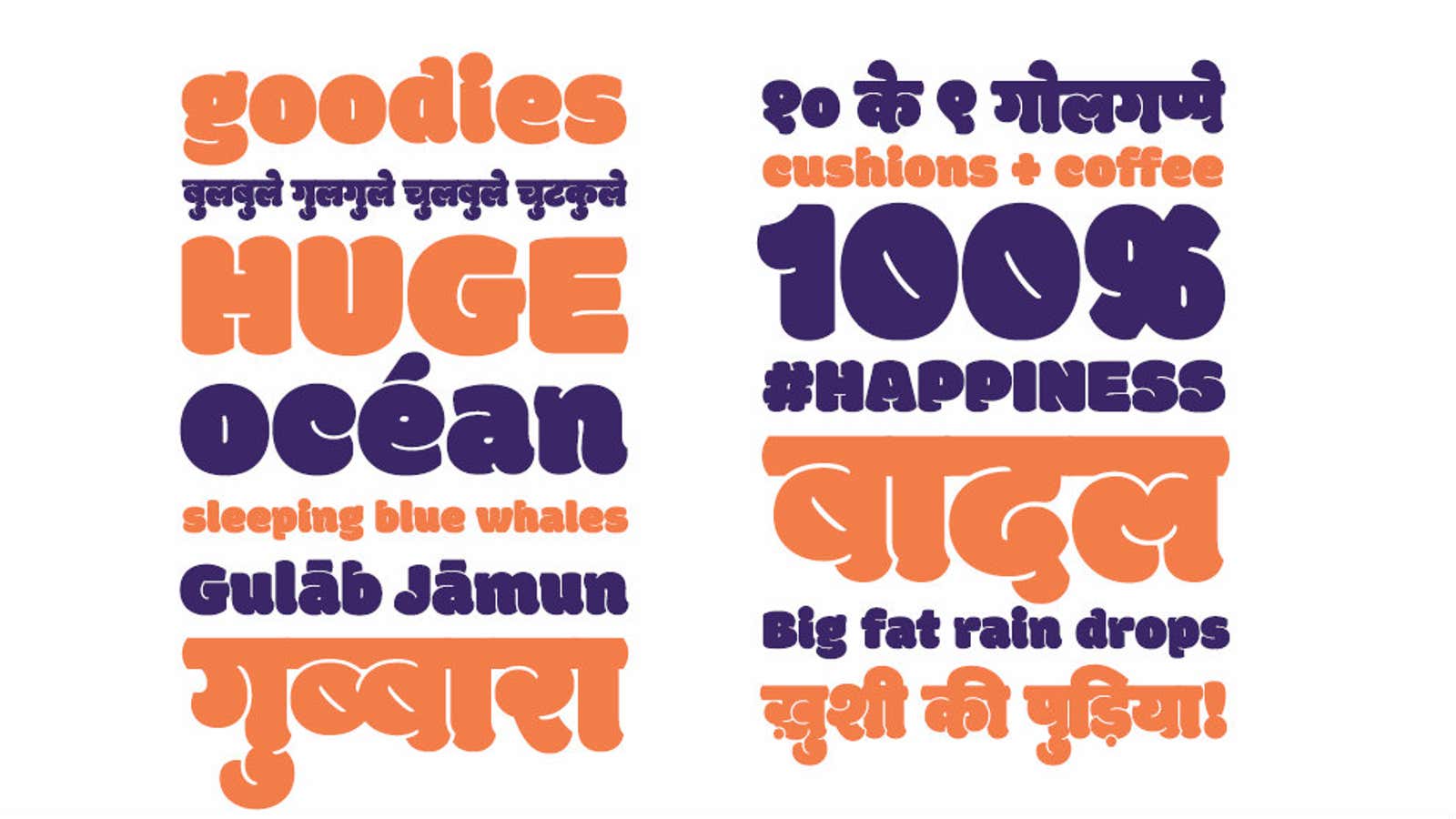Typography matters, and not just for design nerds.
Besides providing a drastically different aesthetic experience from website to website, it can also help readers identify the brands they trust, and the news they can rely on. But in an online world overwhelmingly dominated by the English language, India’s many regional languages make up a miniscule part of the available content. So, their scripts rarely receive the kind of attention that the English script does.
Since 2013, though, a Mumbai-based typography collective has been working to change this, crafting modern typefaces for Indic scripts, be it Gujarati, Gurmukhi, Tamil, or Telugu.
Ek Type, a team of 15 calligraphers, researchers, and academics, was founded by type designers Girish Dalvi, Noopur Datye, and Sarang Kulkarni. While Dalvi studied at the Indian Institute of Technology Bombay, Datye and Kulkarni are alumni of the Sir J J Institute of Applied Art, Mumbai. So far, the collective has created six free, Unicode-compliant, and open source fonts that are available for anyone in the world to download via Google. These include everything from playful bubble letters to rounded styles. And true to the company’s name (ek means “one” in many Indian languages), each font is designed to work in different Indic scripts.
“At Ek Type we try to design multiple scripts at the same time, with multiple designers working simultaneously on separate scripts,” Kulkarni told Quartz. “This ensures that each script maintains its individuality, while being part of a larger family.”
The Baloo font, for instance, is available in 10 Indic scripts, including Malayalam, Kannada, and Odia, as well as a Latin script. It’s been used in over 5,000 websites around the world, according to Google Fonts. Meanwhile, Ek Type’s Mukta Devanagari and Latin font is used on communications from the prime minister’s office, and has been featured on some 45,000 websites.
Ek Type also designs custom fonts and logos, often used in the offline regional branding campaigns of companies such as Coca-Cola, Vodafone, and Flipkart. Some of their fonts are used by regional-language newspapers and television channels, too. But in each and every iteration, there’s one focus: the fonts have to accurately represent the visual grammar of different Indic scripts, which is something the designers at Ek Type believe non-native speakers can miss out on.
“…each script has a structure, texture, rhythm, and peculiarities that form the visual grammar that is unique to that script,” Kulkarni explained. “…many countries are looking at Indian fonts, and what we personally see is that they are not doing justice to the script grammar. They’re very good in terms of design or technology but when it comes to authenticity of (the) Indian script, that is lacking,” he added.
Over the years, Ek Type has been trying to raise awareness about Indian typography among local students and design enthusiasts, holding talks and workshops, besides publishing calligraphy manuals, through its non-profit organisation Aksharaya. This was also the motivation behind making most of their fonts available to anyone.
“The reason we open-sourced our fonts was that when we started off, it wasn’t available readily for us. We had to do a lot of trial and error,” co-founder Noopur Datye explained. Now, emerging designers have a resource to develop Indic typefaces of their own, she said.
Ek Type isn’t the only company in the field, though. One pioneer, Ahmedabad-based Indian Type Foundry, has been at it since 2009. Founded by National Institute of Design alumnus Satya Rajpurohit, the company has created over 200 retail and custom fonts that have been bought by big brands such as Apple and Samsung, among others.
But with the market poised to explode, it’s certainly a case of the more, the merrier.
